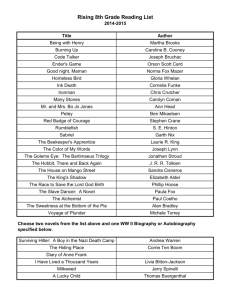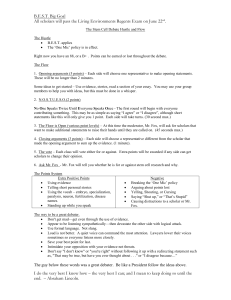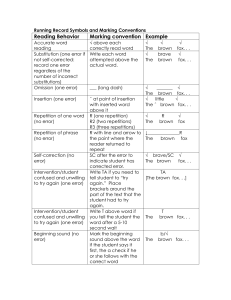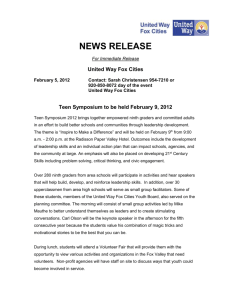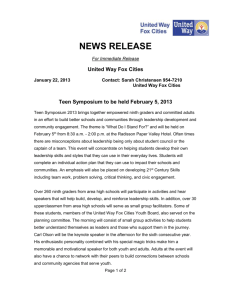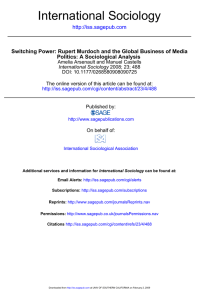Rupert Murdoch and News Corporation
advertisement
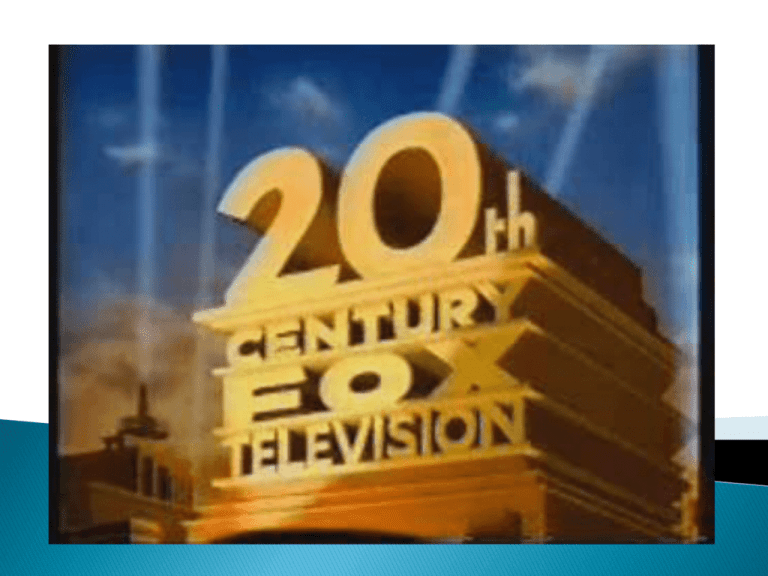
MCC314 Global Media Industries Session 10 Lecture Murdoch is a bizzare character ; known for “tits and bums” - notorious headlines on his papers “ Up Yours Delors”, “ Headless body at Topless Bars”, tabloid scoops on Prince Harry, Amy Winehouse, Kate Moss, page 4 girls Nevertheless has ear of presidents and prime ministers around the world Has a chair in Language & Communications School at Oxford University Prompts great admiration or hatred for what he has done for journalism “Mr. Murdoch’s record speaks for itself…” - John Hewson How can the most influential Australian of all time be an American?!$% …the most original business figure Australia has produced…” - Les Carlton, Melbourne Herald “The most influential Australian of all time…” -The Bulletin, 2006 Considered the most original business figure Australia ever produced Genius for creating NewsCorp at present form and ability to arise from financial difficulty In OZ, 60% of all dailies; ◦ The Australian, The Daily Telegraph, The Herald Sun, The Courier Mail, The Sunday Times In UK ◦ The Times, The Sun (largest English-language daily in the world), News of the World (largest Sunday paper in the world) In US ◦ The New York Post Fox Network ◦ 33 TV stations in US ◦ Fox Broadcasting Company – produces The Simpson, The Practice ◦ Fox Cable Fox News Channel Fox Sports NatGeo Channel 20th Century Fox – produced Moulin Rouge, Avatar Fox Video – distributes products to the Far East Successfully purchased Dow Jones (publisher of Wall Street Journal) on 1 August 2007 Direct Broadcasting Satellite ◦ BSkyB (Britain, Europe) ◦ Stream (Italy) ◦ Star TV (HK, China, India, and other Asian countries) 25% stake in Foxtel together with Telstra and Packer’s Publishing and Broadcasting Ltd. HarperCollins ◦ 2nd largest English-language book publisher TV Guide (US) ◦ Largest circulation of consumer TV magazine MySpace AmericanIdol.com New York Knicks (40%) NY Rangers Madison Square Garden In 2004, earned Aus$2.75B Also the end of NewsCorp in Adelaide 2006, NewsCorp listed on the NYSE Based almost entirely in NY Reason: ◦ Better access to capital and investors in the world’s financial markets; ◦ Demonstrating acute awareness of conglomeration and fundamental business of the media as a profit machine 1952 – Rupert took charge of News Ltd in Adelaide after death of father 1960 – extended to Sydney by buying The Daily Mirror 1964 – started the only national daily, The Australian 1969 – bought News of the World and The Sun (UK) ◦ Successful with huge cash flow from international stage 1970 – bought San Antonio Express, The Chicago Sun and New York Post 1970 – 1980 – Diversified entrepreneurship ◦ 50% of Ansett Airlines (now defunct) ◦ Purchased Channel 10 in Sydney and approached satellite TV operations in UK and US 1985 – bought 20th Century Fox & 6 TV stations from Metromedia ◦ Made part of the Fox Network (major TV network in the US alongside ABC,CBS and NBC 1990 – invested on satellite TV in UK (BSkyB) ◦ ‘colossal investments in unproven high-risk satellite-based new media ventures’ Barn, 2000) Invested on Star TV ◦ ◦ ◦ ◦ ◦ Japan HK Asia Australia Other parts of Asia “Rupert is a strange combination of opportunist and long-range visionary, and they don’t really go together, I think. . . He’s always had the long-range vision of a global media company with worldwide reach that could make money and affect events. Within that very, very broad framework, when opportunities come up, he grabs them” - Brill’s Content, 2001 Driven by his character and personality Often engaged in high-risk strategy, purchased newspapers no one touches Almost lost News Corp early 90s but managed to survive with satellite TV investments Key elements behind logic of acquisitions is high level of integration INTEGRATION ◦ The ability to produce a mix of companies and businesses that integrate into a well-functioning whole Three types of integration: ◦ Vertical integration ◦ Horizontal integration ◦ Conglomerate integration Owning companies at different stages of the production of given product + + E.g, a company owns a chain of three companies of different roles: newspaper mill; newspaper distributor; news agency Profit at each level eventually allows parent company to reap revenue Each company also receives individual priority treatment/ operates with cost consideration to survive Owning more than one producer at a given stage of the production process. ◦ Effective for advertisement ◦ Using fully the resources (printing presses) ◦ E.g, running morning and evening paper allows printing press to work throughout the day Ownership of non-related companies ◦ Alan Bond’s ownership of TV network (Nine TV) as well as brewing, mining, education, tourism ◦ AirAsia – tourism, telecommunications, sports Favorable to advertising of other companies with low rates Murdoch has always been focused on traditional broadcast media but has now forayed into Internet ◦ MySpace ◦ Alliance with Google Favorable interest rates from his relations with banking executives ◦ Loans with 146 banks “Judicious juggler” of assets ◦ Manages to balance the levels of loans for buying new companies against selling off of old assets Cash Flow ◦ Actual money in hand with which to do things. ◦ Comes from advertising enabling NewsCorp to keep up with payments Tried to purchase DirectTV (2000) owned by GM Loss with Echostar, main satellite TV of Direct TV competitor ◦ Persistent due to his foresight of the promise of global satellite TV (esp. in US) 2003 – succeeded in purchasing DirectTV after FCC regulated that Echostar’s purchase may result in satellite TV monopoly (more than 90% in US) Merging of Stream and Telepiu pay TV ◦ Both companies were losing US$500M a year ◦ Affected by advertising downturn after 9/11 ◦ 2002 – declared a quarterly loss of US$7.7B though not a direct cash loss ◦ Profited $1.6B compared to $671M in 2001due to cost efficiencies 2005 – purchased MySpace.com for US$580M Figured to be the most magnificent decisions by Murdoch ◦ With 100M personal profiles MySpace has the potential to “fully integrate” the bulk of NewsCorp’s products Advent of new interactive media, has potential to fully integrate horizontally, vertically and conglomerate to next generation global media consumers Winning Dow Jones & Company – access to The Wall Street Journal and its historical archives USD 5.6 billion sale WSJ reach and strength: • Newspaper – 2.1 million • WSJ.com – 980,000 paid subscribers • 16 Pulitzer prizes • Goodwill and global reputation

